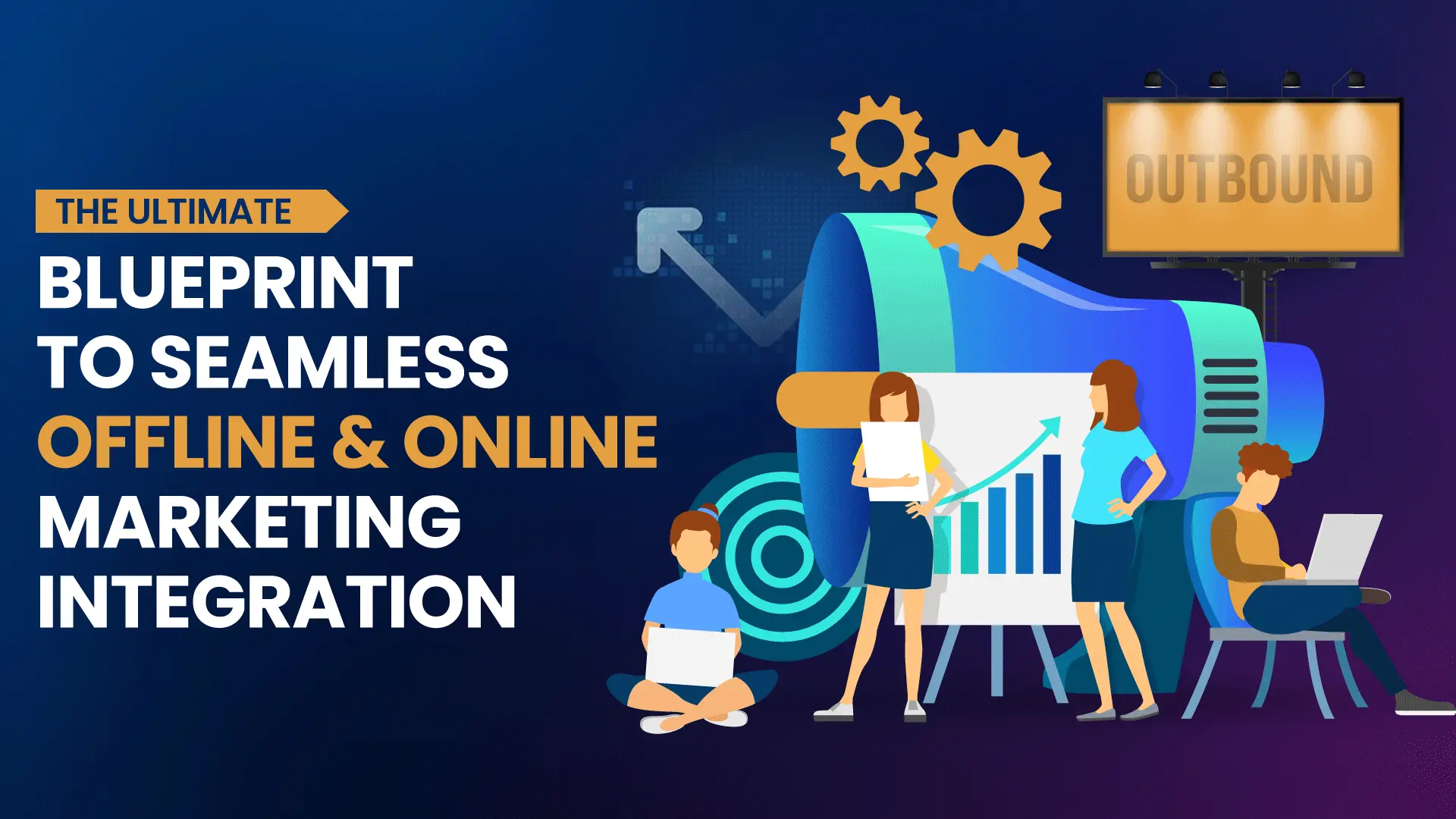Offline marketing isn’t dead. It’s just been awkwardly standing in the corner while digital marketing hogs the spotlight. But when the two join forces? That’s when true marketing magic happens.
This guide will show you exactly how to fuse your offline and online strategies into one seamless ecosystem—built for maximum reach, richer data, and a stronger, more loyal customer base.
Whether you’re marketing a B2B SaaS platform or scaling a fantasy sports app, it’s time to stop treating offline and online as divorced parents fighting over the brand budget.
Why Integrate Offline and Online Marketing in the First Place?
Because your customers don’t live in a vacuum.
They scroll LinkedIn during work hours, listen to podcasts while commuting, and might stumble across your booth at a niche industry conference or a sports sponsorship event. If your marketing strategy doesn’t reflect this omnichannel reality, you’re not just leaving money on the table—you’re setting it on fire.
Key Benefits of Integrating offline & online marketing:
- Consistent Brand Messaging across touchpoints
- Better Attribution from offline campaigns
- Higher Engagement by reinforcing messages
- Improved ROI through smarter targeting
Step-by-Step Blueprint for Integrating Offline and Online Marketing
Step 1: Define Unified Campaign Goals
Before you start printing flyers or launching Google Ads, set campaign objectives that apply to both worlds. Examples:
- Generate 1,000 qualified leads from a product launch campaign
- Increase demo bookings by 20% using event-based retargeting
- Drive app installs via QR code placements in real-world events
You need one north star, not two competing compasses.
Step 2: Sync Your Messaging and Creative
Ensure your offline materials (banners, event booths, swag, billboards) and online assets (landing pages, social ads, emails) speak the same visual and verbal language.
That means:
- Same tagline
- Same value proposition
- Same CTA (ideally leading to a specific digital destination)
If your offline brochure says “Learn more at www.brand.com” but your online CTA says “Book a demo today,” you’re confusing your audience—and confused people don’t convert.
Step 3: Leverage Technology to Bridge the Gap
Offline doesn’t have to mean “data blind.” Use tech to connect the dots:
| Offline Element | Integration Method | Online Outcome |
| Print Ads/Brochures | QR codes with UTM links | Trackable visits and conversions |
| Events & Trade Shows | Scannable badges, lead capture apps | Sync with CRM and email nurturing |
| Direct Mail Campaigns | Personalized URLs (PURLs), discount codes | Attribution via campaign parameters |
| Branded Merchandise | NFC tags, social hashtags, QR-based games | User-generated content & engagement |
Yes, QR codes still work in 2025. And yes, your competitors are already using them.
Step 4: Create Campaign-Specific Landing Pages
Every offline touchpoint should lead users somewhere specific—not your homepage. A custom landing page should:
- Match the offline message
- Capture intent (email, signup, demo, survey)
- Include tracking for source attribution
Bonus: You can A/B test these pages to compare online vs. offline conversion rates. Nerdy? Absolutely. Effective? You bet.
Step 5: Retarget Offline Engagements Digitally
Went to a conference? Sponsored a sports event? Collected leads at a university hackathon? Here’s where digital takes the baton:
- Upload contacts to LinkedIn or Meta for custom audience retargeting
- Send post-event nurture emails with gated content
- Run remarketing ads to warm them up for conversion
This is where most brands drop the ball. You already paid to engage them offline—why stop there?
Step 6: Measure, Analyze, Optimize
Yes, you can measure offline impact—if you’ve set up your systems correctly.
Track:
- QR code scans per location
- Custom coupon redemption rates
- PURL traffic and bounce rates
- Demo bookings from event lists
- Social media mentions tied to physical events
Then ask: What worked? What flopped? What can we do smarter next time?
Real-Life Application: Togwe’s Offline + Online Fusion
Let’s say Togwe is launching a new fantasy sports app SDK at a developer summit. Here’s how to integrate both realms:
- Offline: Sponsor the event, set up a slick booth with NFC-enabled swag, and demo the product live.
- Bridge: QR code on handouts links to a custom landing page offering a free trial + technical walkthrough.
- Online: Retarget booth visitors on LinkedIn and YouTube with testimonials and demo invites.
- Follow-up: Email those who scanned but didn’t convert, and invite them to a post-event webinar.
The result? A campaign that’s not just memorable—it’s measurable.
Final Thoughts
Offline and online marketing aren’t rivals—they’re co-pilots. When they work together, you gain a 360-degree view of your customer journey, a stronger brand presence, and a much more accountable marketing strategy.
For Togwe, where product excellence meets digital innovation, integrated marketing ensures your SaaS tools or fantasy sports platforms don’t just make noise—they make conversions.
Ready to connect your offline efforts to online outcomes?
Togwe helps B2B SaaS and fantasy app brands create integrated campaigns that convert across every channel. Let’s build a smarter blueprint—one QR code at a time.
FAQ’s
What’s the biggest mistake brands make when integrating offline and online marketing?
Treating them as separate departments. If your online team isn’t involved in event planning, or your field marketers don’t know your PPC strategy, you’re wasting potential.
Can this work for early-stage startups?
Yes. You don’t need a trade show budget. Even small offline tactics—like direct mail for VIP prospects or local meetups can be tied to digital follow-ups.
How do I prove ROI for offline efforts?
Use unique URLs, trackable QR codes, coupon codes, and integrate lead capture tools with your CRM. Attribution starts with planning.
What tools help bridge offline and online campaigns?
- CRM: HubSpot, Salesforce
- QR/PURL Generators: Bitly, Unbounce
- Event Lead Capture: Cvent, Attendify
- Ad Retargeting: Meta Ads, LinkedIn Matched Audiences

